Nyima Dolma Sundari was born to second generation Nepalese Buddhist immigrants in French Riviera. Far off from her cultural roots, her grandmother and father were her initial guide to spirituality until she discovered deep-seated belief within herself. She explored her inner self and found her spiritual tethers in an ancient sacred art – Tsha tsha. The art was transmitted to her from a renowned Buddhist master Karma Dorjee Lama. His transmissions continue to be the core of Nyima’s practice of tsatsa art as a meditative technique which enhances mindfulness – one of the cornerstones of Buddhist teachings. In her material life, she is a business executive. When she is not practicing Tsatsa, Nyima studies, and practices classical South Indian dance Bharatnatyam and choreography. This interview traces Nyima’s journey and her deep connection with the sacred practice of making tsha tshas.
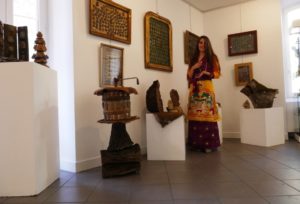
About Tsa Tsa Artform
- “Tsa Tsa” is a word transliterated from Sanskrit. Can you please tell us about the origins of the word and what it means in Tibetan?
In Tibetan, TsaTsa or Tsha-tsha means to “breath life into” or “image”. On another level, I see them as symbolizing molds insufflate with “energy” or “life” into a representation like a figurine. Tsatsa molds can represent deities, animals, symbols, stupa, ritual objects or even tools and utensils of everyday life.
- Can you tell us in brief about the origins of the Tsa Tsa art?
Since ancient times, the people of the Himalayas have been shaping clay and bequeathed the secret of their art to members of their family and clan. The tradition says that the Tsha art comes from even before the bon po tradition and was then got incorporated and influenced by the emergence of Tibetan Buddhism.
According to their animist and shamanic beliefs, Bonpos sought to appease the local gods and spirits of mountains, valleys, lakes, and rivers with prayers, rituals, and offerings. They thought that these elemental beings when they were angry, caused natural disasters and diseases. Thus they would have used their effigies as much to destroy them, to control them, to acquire their strength as to grant them their protective presence to pacify nature and to receive the blessings of the gods.
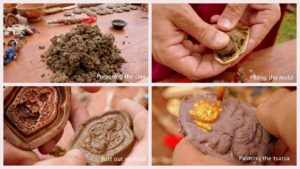
- How has tsatsa art evolved as a practicing art form?
They are found throughout Asia, in places of worship, on paths, in monasteries, incorporated in architecture, books, and jewelry. Their first vocation is to be given in offerings to the elements allowing them to disperse their good energies. They also serve to be kept for protection in a house, on the altar or in a Buddhist monument. In Ladakh, Tibet, Nepal, Sikkim and Bhutan passers-by admire tsatsa deposited on the heights of temples, crossing a pass, near rivers and subjected to elements of rain, snow, etc. They are also offered as gifts on various occasions (like marriage, birth etc ). Tsatsas are subject to the elements of nature and thus made to be dissolved. When the wind blows, or the water dissolves the clay, the energies and condensed prayers in tsatsa are scattered across space. They are also preserved as relics which have become very precious over time, especially those made with ashes of deceased. Tsatsa is installed permanently on the altar often painted and is installed on various supports wood, frames, and natural support. Then, this art evolved into a subject of transmission of Buddhism practiced mainly in monasteries. Archeologists even use them today to track the expansion of Tibetan Buddhism throughout the Himalayas and beyond, in Bhutan and India. The Tsha Tsha rituals were an important part of the religious life in villages, and it was practiced during the edification and consecration of Stupas, as well as for birth and death ceremonies.
I see curiosity about tsatsa on the social network. People are trying it out. They are fascinated by the beauty and the magical aspects.
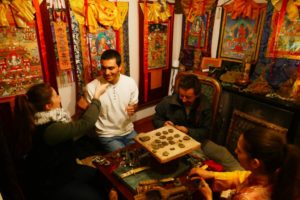
- In their day to day life, how have Tibetans/Buddhists been using Tsa Tsa art? What values do they draw from the use of Tsa tsa artifacts?
Art is inspired by life. The clay figurines are a perfect representation of this point of view. Tsatsa inspires spiritual value and respect but also superstition. Left in the wind, deposited in the rivers, thrown into the fire, buried – they emit beneficial and healing energies. Once decomposed they also direct their spiritual charge of prayers and vows of the faithful to the heavens. On festivals and other special occasions, these deities are given as gifts to guests and relatives when they arrive in the villages and presented as offerings to the gods and ancestors. Tsatsa shaped like animals are offered as toys to children. After having played with these magnificent figurine representations, the children could offer them to the altar as a special offering to Heaven and Earth.
Animal figurines were not just toys. They were painted sometimes by color pigments or by soot. Their motives were mostly pictures of legends that children loved. Their production was inspired by folk tales, and also used to tell the legend and transmit teachings through their representation
The offering of tsatsa is considered as the realization of the “pure vision”. It transforms the impure to pure, for processing materials used in deities effigies in which the negativities of the mind and symbolized poisons are locked in the material used. So this spiritual work through the transformation of material carried by the disciple and the master is used as a path to enlightenment. They promise to accept the transformations of the tsatsa into sacred substances once blessed to be offered or to be destroyed.
- In what way Tsa Tsa is connected or practiced in conjunction with other Tibetan Art forms like Thangka paintings, frescos, rock drawing and contemporary painting; metal wares, masks, block-printing, textiles handicrafts and wooden wares; and Tibetan architecture?
Symbols represented in tsatsa effigies have a cosmological and religious meaning. It represents a conception of the world of the Bonpo and Buddhism. The motifs can be found on old textiles, prayer books, caves, ceramics or carved on walls. All Asian cultures used these symbols as the foundation of their beliefs.
The conjunction is found in the teaching applications of Buddhism. For example, like the thangka, the Tsatsa refer to a deity or symbol with attributes and shapes. It connects us with the energy of the deity represented iconographically with all the teaching that is around. They have a similar role as the togshag (metal amulet) or painting on rice paper amulet because it has the property to protect the wearer. On the architectural side, they are installed into stupas to catalyze energy. They are part of the crowns of masters. Same for cintamani, (Mediators between heaven and earth). Tsatsa can be associated with the jewel that grants the symbolic vows of the union of water and earth or the power of the 5 elements “cintamani”.
- What makes the practice of Tsa tsa making meditative?
At the touch of clay, one can create simple or very complex patterns with just water and clay using the traditional mold. Through this practice, you can experience a new opening of consciousness. These teachings are intended to put in motion the creative abilities of each with the only necessary, clay and molds Tsa-tsas. Clay is a living matter, it keeps the memory of every caress or every impact. To model is to take time for oneself, to let go, to let forms, impressions, emotions emerge from within.
Also, the offering of tsatsa is a clever and powerful way to accumulate merits, remove obstacles related to our practice and purify our samayas. –
This practice combines:
– The experience of the gift or the veneration
– An act to purify
– A preparatory act for meditation
– An act for the accumulation of merit
It must be realized with motivation. It entails extensive visualization to multiply and transform the offerings for a broad result where everything is transformed into spiritual medicine.
- The original method of making Tsa tsa artifacts is the use of clay. However, now different materials including wood, plaster, hydro-stone, or a professional casting system consisting of architectural-grade gypsum are also being used. Do you see this as a departure from tradition or would you see this as an evolution of the art form? What are your views on this?
I see both, a change from the tradition and an evolution. It allows addressing different fields of application that I find interesting. Clay still remains for me the basis of this practice because it keeps its property ephemeral and radionic to absolve the energies whether positive or negative.
In addition, one also uses the herbs, for rituals of health or seeds for offerings to nature, for example, the birds or the monkeys. Some tsatsa can be composed of a mixture of medicinal plants and sacred minerals and precious material of the Himalayas and sometimes of wood dust and colored liquid.
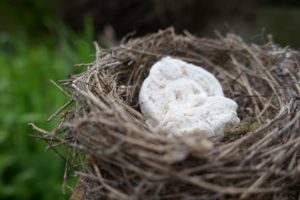
Your Tsa Tsa artform learning process
- Would you term the practice art form as your passion? How and when did you discover your interest in TsaTsa art form?
Yes indeed, I can qualify this form of art as a passion or a way of life. It is this that led me to my master of martial arts! I am devoted to a set of practices: the practice of tsatsa, the practice of pujas and the transmission of this art in the form of workshops. My inspiration for Buddhism comes from my teacher. He taught me, made me discover and live my way with patience. I studied Chinese at school and concretized my interest in Asian art with a trip to China.
I remember the firsts Tsatsa I made with my teacher. They were offered to nature, those made of rice and seeds were hung on trees for the birds and those that remained were offered to family and close friends.
- What were the initial challenges that you faced while trying to learn/practice the art form?
My teacher believed in making me learn by doing, by experience, through mindfulness. It often meant that I had to learn on my own. For example, I remember the first time my master left me all the day with unprepared clay, water, and tsatsa molds. When he arrived, I had not even managed to prepare the clay, which was far too soft to make a tsatsa. The ideas from the tradition are an ocean of treasure. We have not yet had time to realize all the ideas, but they are in our hearts and will be realized in due time.
- Often, students are given a commitment to make 100,000 tsa-tsas of a particular Buddha or meditational deity during their lifetime. Is this art form that you practice also a part of such a process/commitment?
Yes, the commitment to the realization of the 100,000 tsa-tsas of Buddhas or deities has been respected concerning my Master. For my side, I continue to make tsatsa, offering to reach this number. It’s a daily practice that I like to do.
- How has imbibing the art form helped you grow as a person?
Even seemingly mundane but minute tasks like going to the rivers, or to the forest to collect clay finally leading to the finished artifact, all form a part of the meditative process. From the first day, my Master taught me the art of tsatsa, I discovered an unknown and vast universe that I love. Each discovery covers a teaching and enlightenment about the reality around us. Through the practice of tsatsa, I have been able to get a better understanding of Buddhist teachings. They have unveiled my inner being, set a process in motion to a lifetime of learning discovering inner richness.
Your Contribution to Tsa Tsa art form
- In your own words, how do you see yourself contributing to the development and spread of the art form?
I wish, through my works or objects, to transmit joy, to stimulate discovery, to trigger curiosities. I adapt ancient traditional art to contemporary art with the use of natural materials such as wood, brick, earth and other materials.
Everyone aspires to “happiness”. I think this art allows to have small joys shared in the framework of collective workshops, similar to Himalayan practices where we derive happiness in making figurines in small groups. I help people realize that making tsatsas have the power to generate happiness of the eyes and the heart through the work itself, by creating harmonies in the space where it is.
This unique form of complex and ancient art falls into oblivion by its temporary aspect through its practice and oral transmission. It is an art that leaves no direct trace on space and time. Through the practice and spread of this art, I am ensuring the conservation of this ancient tradition, rich in Buddhist philosophy.
- What direction do you see for the art form taking?
In its traditional tsatsa form it will surely disappear. But in the art form, it will spread itself spread. As an art form, it can be learned by anyone. It already starts with the reproduction of silicone molds for fun. prints are the emerging technology and it will open new possibilities for reproducing these at home with 3D printers.
- How do you see Tsa Tsa art form spreading wings beyond the boundaries of Buddhism?
The tsatsa workshops in pottery, prayer wheels, chimes, boxes allow the spread of this art and allows to be comprehended, both in the traditional Buddhist form and in a creative form. It is the beauty of this art – aesthetics is what affects people who are not Buddhists. Thus, in this form of visual art, they can take them for decorative items or collectibles. Most of all, people are interested in the spiritual side of tsatsa.
Tsatsa is an embodiment of spiritual values that Buddhism brings as a universal message of mindfulness, impermanence, and change to the whole world.
-‘Thanks to Nyima Dolma Sundari for her valuable time and educating us on the Tsha Artform’
Submitted by: Faiz Ahmad; faiz458@hotmail.com
Photo and Interview credits: Nyima Dolma Sundari





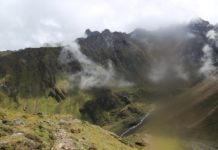

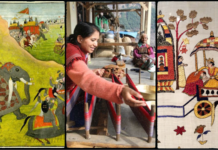









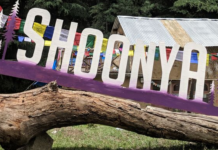
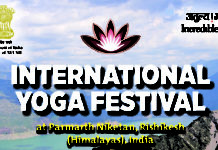


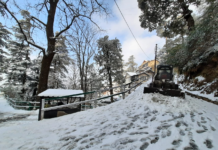
Hello, this article is very interesting. I live in Italy and I’m very interested in the tradition of pottery and buddhist culture. I would be curious to know if you make workshops in Italy. Abito nella zona di Piacenza in Emilia Romagna, se qualcuno in Italia legge questo messagio, magari possiamo organizzare un workshop?
Grazie a voi e Namaste
Une vie et un art qui se lie !
C’est très beau à lire et cela donne envie d’en découvrir d’avantage et de l’expérimentée !
Hello Himalayan Geographic, Hello Nyima Dolma Sundari,
I leave in California where I study History at University.
I like to make pottery, but I did not know anything about this Buddhist pottery art.
It looks very interesting in terms of technics.
To make some figurine with molds it makes me dive back into my childhood when I made Christmas cake with my mother.
It gave me a lot of inspiration for my future creation. I like the fact to mix philosophy and pottery.
When I will make my pottery, i will meditate on that. It gave me a lot of inspiration for my future creation.
Thank you very much for this very interesting article and the discovery.
Kind Regards
Kelly
Immigrée de 2 générations ma fille!!!! mais je rêve!!!!!!!!
voici que tu renies egalement tes racines !!!!Italiennes,Niçoises, Espagnoles
Giordano Bracco/ Garcia, Oliva Cala, Milletti, Bonnavia
C’est le jour de la fête des morts aujourd’hui! penses à tes aïeux et pries pour eux dont pépé Jeannot , pépé Vincent et mamie Vassallo mamie Jeannette et pépé Georges qui t’ont aimés profondément…et qui doivent se retourner dans leur tombes ou dans son urne qui se trouve à 30m d’où tu loges! chez mamie Marie Jeanne Bracco Vassallo
dont tu ne prends jamais de nouvelles….mais bon, je pense qu’ils te pardonnent car tu n’es plus toi, tu n es plus celle qu’ils ont connu et certainement pas par ta faute …bref!
Ma fille il est temps que tu te reprennes, que tu redescendes sur terre car tu nous fais trop de mal à ton père et à moi et toute notre famille d’immigrés
A MÉDITER
J ai oublié Sicilienne également de par ton père et ta mère. …Je m en excuse
In bhutan, we make Tsa Tsa especially when someone passes away. It will be like a stupa but a little one and will be made of clay and little ashes from the cremation will be mixed in it too. We will have to make 108 of it and place it into caves high up in the mountains. We make it for sick people too but that will be made of wheat flour and then thrown in the river. In some cases, people make millions of it to represent a big stupa and place it by the sides and corners of big stupas too.
Thank you Deki Wangmo, for enriching the information above.
Faiz
Thank you very much Dear Deki Wangmo,
It fits perfectly with our tradition!
I would really appreciate to go in bhoutan if I have the occasion, wonderful country, culture 🙂
one daughter of my master lineage lives there 🙂
Very nice paper !
This tsha tsha art is very nice and rich !
First time i read all those information about this art, it is very interesting !
Dear Tenzin-Thank you for your comments. We are happy we could enrich your knowledge.